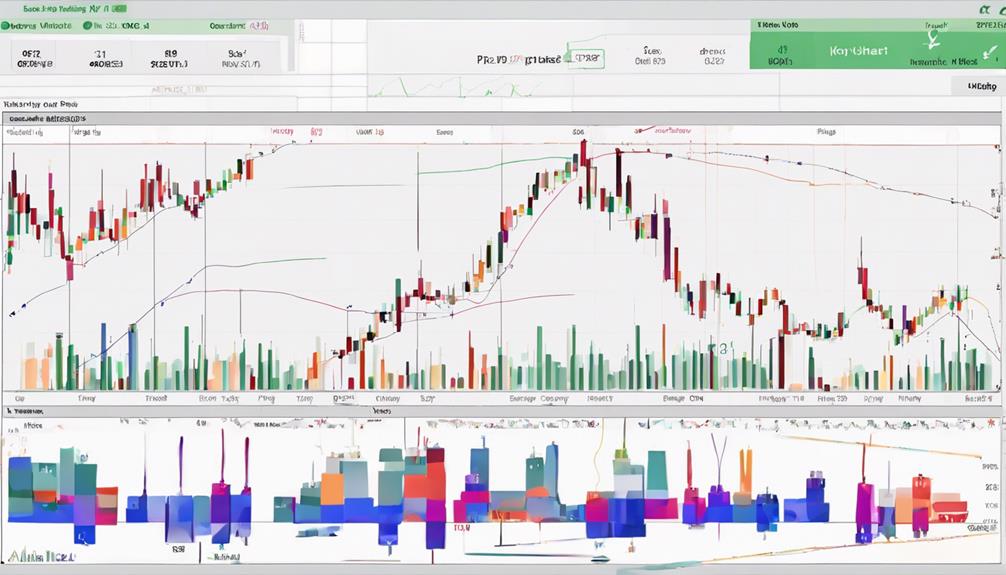When Professionals Sell, Individuals Buy: Understanding Market Volatility

Table of Contents
Market volatility refers to the rate at which the price of a security or market index fluctuates. It's characterized by rapid and unpredictable price swings, making it challenging to predict future returns. These fluctuations significantly impact asset prices, creating both opportunities and risks for investors. This article aims to explore the underlying reasons behind the contrasting buying and selling behaviors of professional and individual investors during periods of market volatility, focusing on investor behavior, market trends, and risk tolerance.
Psychological Biases Driving Individual Investor Behavior During Volatility
Individual investors are often heavily influenced by psychological biases that lead to emotional decision-making during volatile market conditions. This often results in poor investment outcomes.
Fear and Greed: The Emotional Rollercoaster
Fear and greed are powerful emotions that significantly influence individual investor decisions. These emotions can lead to impulsive buying and selling, often counter to rational investment strategies.
- Fear-driven selling (panic selling): Investors may sell assets at a loss during market downturns, driven by fear of further losses.
- Greed-driven buying (fear of missing out – FOMO): Investors might chase rising prices, fueled by the fear of missing out on potential gains, often entering the market at its peak.
These actions are often amplified by cognitive biases such as confirmation bias (seeking information that confirms pre-existing beliefs) and anchoring bias (over-relying on the first piece of information received).
Herd Mentality and Market Sentiment
Individuals frequently succumb to herd mentality, mirroring the actions of others rather than conducting independent analysis. Market sentiment, heavily influenced by media coverage and social media trends, plays a significant role in this behavior.
- Sensationalized media reports can amplify fear and uncertainty, prompting widespread selling.
- Social media platforms can spread misinformation and hype, leading to impulsive buying decisions based on speculation rather than fundamental analysis.
This social contagion significantly impacts investment decisions, often exacerbating market trends and increasing volatility.
Lack of Diversification and Risk Management
Many individual investors lack the diversification and risk management strategies employed by professionals.
- Concentrating investments in a single asset class or sector exposes investors to significant risk.
- Failure to adequately assess and manage risk can lead to substantial losses during market downturns.
A well-diversified portfolio, tailored to an individual's risk tolerance, is crucial for mitigating risk and achieving long-term investment goals.
Professional Investor Strategies and Market Insights
Professional investors employ sophisticated strategies and utilize extensive resources to navigate market volatility more effectively.
Fundamental and Technical Analysis
Professionals rely heavily on fundamental and technical analysis to make informed investment decisions.
- Fundamental analysis: Involves examining a company's financial statements, management quality, and industry position to assess its intrinsic value.
- Technical analysis: Uses charts and other historical data to identify trends and predict future price movements.
They have access to advanced tools and resources, including proprietary databases and sophisticated analytical software, giving them a significant advantage.
Risk Management and Portfolio Diversification
Professional investors implement robust risk management strategies and maintain highly diversified portfolios.
- Hedging strategies: Techniques used to offset potential losses in one investment by taking an opposite position in another.
- Asset allocation models: Sophisticated methods for distributing investments across various asset classes to optimize risk and return.
This allows them to manage risk effectively across various market conditions and minimize potential losses during periods of high volatility.
Long-Term Investment Horizons
Professional investors typically adopt a long-term perspective, focusing on long-term value creation rather than short-term price fluctuations.
- The principle of "buy low, sell high" is a cornerstone of their strategy.
- Patience and discipline are crucial for successful long-term investing, allowing them to weather short-term market downturns.
This contrasts sharply with the short-term focus often exhibited by individual investors.
Recognizing Opportunities and Mitigating Risks During Volatility
Market volatility, while presenting risks, also creates opportunities for astute investors.
Identifying Contrarian Investment Opportunities
Periods of market volatility can create opportunities to buy undervalued assets.
- Market corrections often present buying opportunities for long-term investors.
- Identifying undervalued assets requires thorough due diligence and independent research.
This contrarian approach requires careful analysis and a long-term perspective.
Implementing a Robust Investment Plan
A well-defined investment plan is crucial for navigating market volatility.
- Set clear financial goals.
- Define your risk tolerance.
- Choose appropriate investment vehicles.
Regular review and adjustments are vital to ensure the plan remains aligned with your goals and risk profile.
Seeking Professional Financial Advice
Seeking guidance from a qualified financial advisor can significantly enhance investment outcomes.
- Financial advisors provide personalized advice tailored to your individual circumstances.
- They can help you develop a comprehensive investment strategy and manage risk effectively.
Establishing trust and open communication with your advisor is essential for a successful investment partnership.
Conclusion: Navigating Market Volatility – When Professionals Sell, Individuals Should…Learn
The key difference lies in approach: professionals utilize sophisticated analysis, robust risk management, and a long-term perspective, while individuals are often swayed by emotions and herd mentality. Understanding psychological biases, employing sound risk management principles, and seeking professional advice are crucial for navigating market volatility successfully. Mastering market volatility requires a commitment to continuous learning and a disciplined investment approach. To learn more about effective investment strategies for navigating market volatility and understanding market trends, [link to relevant resource]. Making informed investment decisions starts with understanding the differences between professional and individual investor behavior during times of uncertainty.

Featured Posts
-
 Open Ais Chat Gpt The Ftc Investigation And Its Future
Apr 28, 2025
Open Ais Chat Gpt The Ftc Investigation And Its Future
Apr 28, 2025 -
 Nintendos Action Against Ryujinx Emulator Development Ceases
Apr 28, 2025
Nintendos Action Against Ryujinx Emulator Development Ceases
Apr 28, 2025 -
 2000 Yankees Diary Joe Torres Meetings And Andy Pettittes Shutout Of The Twins
Apr 28, 2025
2000 Yankees Diary Joe Torres Meetings And Andy Pettittes Shutout Of The Twins
Apr 28, 2025 -
 From Scatological Data To Engaging Podcast The Power Of Ai Digest
Apr 28, 2025
From Scatological Data To Engaging Podcast The Power Of Ai Digest
Apr 28, 2025 -
 Updated Red Sox Lineup Casas Moved Down Outfielder Returns From Injury
Apr 28, 2025
Updated Red Sox Lineup Casas Moved Down Outfielder Returns From Injury
Apr 28, 2025
Latest Posts
-
 Updated Red Sox Lineup Casas Moved Down Outfielder Returns From Injury
Apr 28, 2025
Updated Red Sox Lineup Casas Moved Down Outfielder Returns From Injury
Apr 28, 2025 -
 Red Sox Starting Lineup Casas Position Shift Outfielders Comeback
Apr 28, 2025
Red Sox Starting Lineup Casas Position Shift Outfielders Comeback
Apr 28, 2025 -
 Red Sox Lineup Shakeup Casas Demoted Struggling Outfielder Returns
Apr 28, 2025
Red Sox Lineup Shakeup Casas Demoted Struggling Outfielder Returns
Apr 28, 2025 -
 Jarren Duran 2 0 This Red Sox Outfielders Potential For A Breakout Season
Apr 28, 2025
Jarren Duran 2 0 This Red Sox Outfielders Potential For A Breakout Season
Apr 28, 2025 -
 The Curse Is Broken Orioles Announcer And The 160 Game Hit Streak
Apr 28, 2025
The Curse Is Broken Orioles Announcer And The 160 Game Hit Streak
Apr 28, 2025
